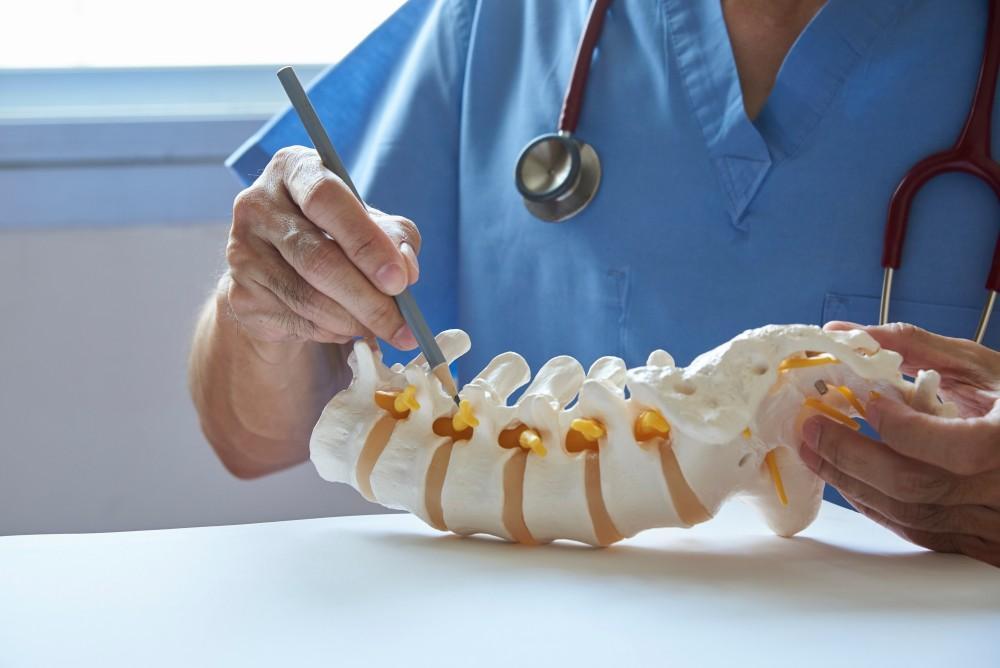
The Link Between Degenerative Disc Disease and a Pinched Nerve

“Degenerative disc disease” is something of a misnomer — DDD isn’t a disease, but rather a spinal condition where damage to an intervertebral disc leads to pain, including pain from a “pinched” or impinged-upon nerve. Pinching of the nerve may cause pain that spreads into an extremity.
Disc degeneration can start as early as in your 20s, but it takes a disc a long time to degenerate on its own, so unless you have an injury or some other factor at work, it may take decades before you feel the consequences. It’s also true that not everyone with DDD ends up in pain.
At Vertrae®, with locations in Dayton and Springfield, Ohio, board-certified neurosurgeon Dr. Kamal R. Woods understands the discomfort and dysfunction that can occur from a pinched nerve. That’s why he offers a wide range of treatment options, both conservative methods and cutting-edge, minimally invasive surgical procedures. Since DDD is a major cause of a pinched nerve, he’s put together this informative guide so you’ll know when to seek medical help.
Your spine at work
Your spine reaches from the base of your skull to your coccyx. It’s strong and stiff enough so you can stand up straight, yet flexible enough so you can bend, flex, and twist. An adult spine contains 24 interlocking bones called vertebrae that are separated by cushiony discs that bear the load of your body and act as shock absorbers when you move.
The outer part of each disc, called the annulus, is firm and contains nerves; the inner material, called the nucleus, is more gel-like. If the annulus tears due to an injury or the simple wear-and-tear of age, the gel can ooze out, impinging on spinal nerves and causing a great deal of pain.
The vertebrae are hooked together by small bony protrusions called facet joints, and together they form the spinal column, which surrounds and protects the spinal canal. The spinal cord runs through the canal, with peripheral nerves exiting the spine at specific locations and heading out to regions of the body like the arms and legs. If disc material presses on a nerve root in the canal (“pinches”), the pain can radiate out to those regions, a condition called radiculopathy.
DDD can occur anywhere in the spine, but it’s most common in the cervical (neck) or lumbar (lower back) regions since those are the parts that move the most.
DDD symptoms and the presentation of a pinched nerve
Not everyone with DDD experiences pain, and for those that do have pain, levels vary from one person to another. Other common symptoms include:
- Pain that occurs with bending, twisting, or lifting something heavy
- Back “seizes up,” becoming inflexible
- Perception that spine can’t provide support for neck and head
- Muscle tension or muscle spasms
- Increased pain in certain positions, sitting or standing for extended periods or looking down at a device (“tech neck”)
- Reduced pain when changing positions frequently or stretching the spine
- Decreased pain in certain positions, reclining or lying down with a pillow under the knees
If a degrading disc has pinched a spinal nerve, you’ll feel the characteristic hot, sharp, radiating pain of radiculopathy, where the pain travels along the path of the nerve into the arms or legs. A good example of lumbar radiculopathy is sciatica. Here, the disc impinges on the root of the sciatic nerve, which exits the lumbar spine at the L4-L5 and L5-S1 levels. The pain travels through your buttocks and down the outside of your leg, sometimes even reaching into the foot. The pain may come and go, depending on your position.
Treating a pinched nerve from DDD
If your condition is minor, Dr. Woods may recommend rest and limited activities for a short period of time. He may also recommend OTC anti-inflammatories or prescription drugs like muscle relaxants to help with the pain, and physical therapy, where you’ll learn stretching and strengthening exercises to take the pressure off the nerve.
The next level of treatment is therapeutic injections. These include:
- Epidural corticosteroid shots into the space around your spinal cord (relieves inflammation)
- Nerve blocks, injecting pain-relieving medication directly into the affected nerve
- Trigger point injections, injecting pain-relieving medication into the nearby muscle
If none of these work and you need surgery to address your pinched nerve, Dr. Woods has extensive experience performing many different spinal procedures, including minimally invasive and robotic options.
If you’ve got pain radiating from your back into an extremity, you’re probably dealing with a pinched nerve, and that may be caused by degenerative disc disease. To get a proper diagnosis and effective treatment, give Vertrae a call at either location to schedule a consultation with Dr. Woods, or book online with us today.
You Might Also Enjoy...


4 Benefits of Outpatient Spine Surgery

Am I a Candidate for Kyphoplasty?

Pulled Muscle vs. Pinched Nerve: What's the Difference?

4 Subtle Signs of Sciatica

